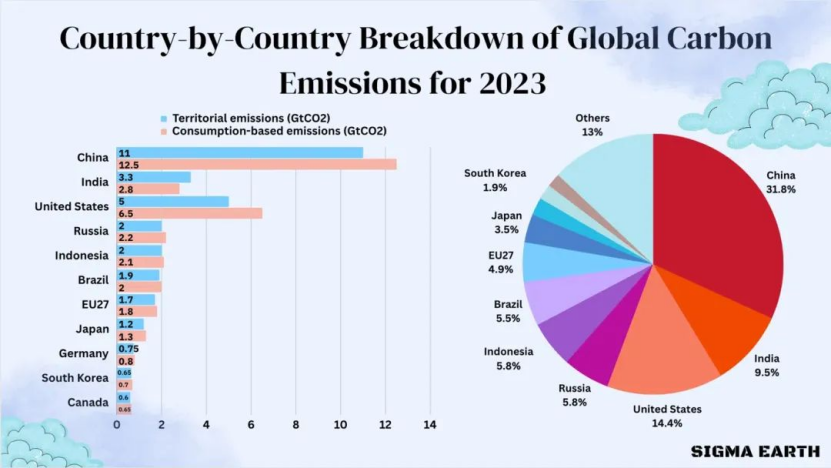Exploring the "Carbon" Code for Solid Waste Resource Utilization!
Global climate change caused by excessive emission of greenhouse gases has become one of the serious problems that need to be solved urgently by human beings all over the world. Capturing, utilizing and storing CO2 emissions (CCUS) is an important way to achieve the goal of "carbon peak" and "carbon neutrality" in China, which has important strategic significance and practical value.
As an efficient carbon fixation technology, CO2 mineralization has attracted more and more attention. At the same time, China's traditional industries such as building materials, metallurgy, chemical industry and thermal power will produce a large number of calcium-containing solid wastes, such as fly ash, steel slag, red mud, carbide slag, phosphogypsum, etc. At present, these calcium-containing solid wastes are facing the dilemma of difficult scale and resource utilization.

The technology of CO2 mineralizing solid waste stems from the cooperative solution to two major environmental problems-the massive accumulation of industrial solid waste and the excessive emission of greenhouse gases.
CO2 mineralization technology has been considered as a carbon emission reduction technology with large-scale CO2 sequestration potential and application prospect since it was first put forward in 1990s. At the beginning of the 21st century, scientists found that industrial solid wastes (such as coal gangue, steel slag, fly ash, etc.) rich in metal elements such as calcium and magnesium can react chemically with CO2 to generate stable carbonate minerals, thus realizing the dual effects of "solid waste with waste and synergistic utilization". Under the background of global green development vision and China's "double carbon" strategy, this technology has become the key path to realize circular economy and green development.
From the thermodynamic point of view, CO2 mineralization is a process from high energy state to low energy state, so the generated carbonate can exist stably for a long time. The early research on CO2 mineralization technology mainly focused on the optimization of reaction conditions, such as accelerating the reaction rate by using high-activity solid waste and adopting high-temperature and high-pressure environment, but the high energy consumption and high cost brought by the corresponding means limited the commercialization of the technology.
In recent years, with the deepening of research, the solid waste technology of CO2 mineralization has ushered in a major iteration: firstly, the types of solid waste have expanded from the original single solid waste to the synergistic utilization of multi-source solid waste such as steel slag, carbide slag, phosphorite, red mud and magnesium slag, which has expanded the application scope of the technology; At the same time, low-carbon technologies such as microbial catalysis and photothermal driving reduce the energy consumption required for the reaction, and the application of synergistic excitation and other means is helpful to reduce the high concentration, high temperature and high pressure conditions required for the reaction, further reducing the reaction threshold and the requirements for equipment; In addition, the mineralized products have changed from "supporting role" in landfills to high-value products such as building materials, soil remediation agents and industrial raw materials (nano-calcium carbonate), and gradually formed an integrated process flow of solid waste pretreatment, —CO2 capture, mineralization reaction and product utilization, which expanded the mineralized products to the fields of building materials, agriculture, chemical industry, etc., further expanded the technical application scenarios, significantly improved the economic benefits, and cleared the obstacles for the commercial operation of mineralization technology.
At present, the research on solid waste mineralization technology mainly focuses on the following directions:
Firstly, through pretreatment technologies such as nano-pulverization and microbial mineralization, the reaction rate of calcium and magnesium plasma in solid waste is accelerated to solve the problem of low mineralization efficiency of raw materials;
Secondly, by mixing multi-source solid waste, optimizing the proportion of components and synergistic excitation, the reaction efficiency is significantly improved;
At the same time, develop a solar-driven mineralization system to realize a low-energy carbon fixation system using primary energy;
In addition, the research focuses on promoting the system integration of carbon capture, transportation and mineralization devices to form a zero-carbon park with "solid waste + CO2= resource products".
In the future, with the gradual penetration of CO2 mineralization solid waste technology, it is expected to reshape the industrial ecology.
Environmental aspect: the national annual consumption of solid waste can reach nearly 100 million tons, and the storage is not less than 20 million tons of CO2, which is equivalent to creating a carbon sink scale of Saihanba Forest Farm;
On the economic level: new industries such as mineralized negative carbon products and carbon sink trading will be promoted, and the trillion-dollar market will be instigated to activate the vitality of circular economy;
On the social level, traditional industries such as cement plants, commercial mixed stations and steel plants have been upgraded to "urban carbon sinks", and point emission reduction has been brought together to form a capillary network to achieve carbon neutrality.
Source:https://mp.weixin.qq.com/s/2_FANkY13yd47FIzyf0GNQ
